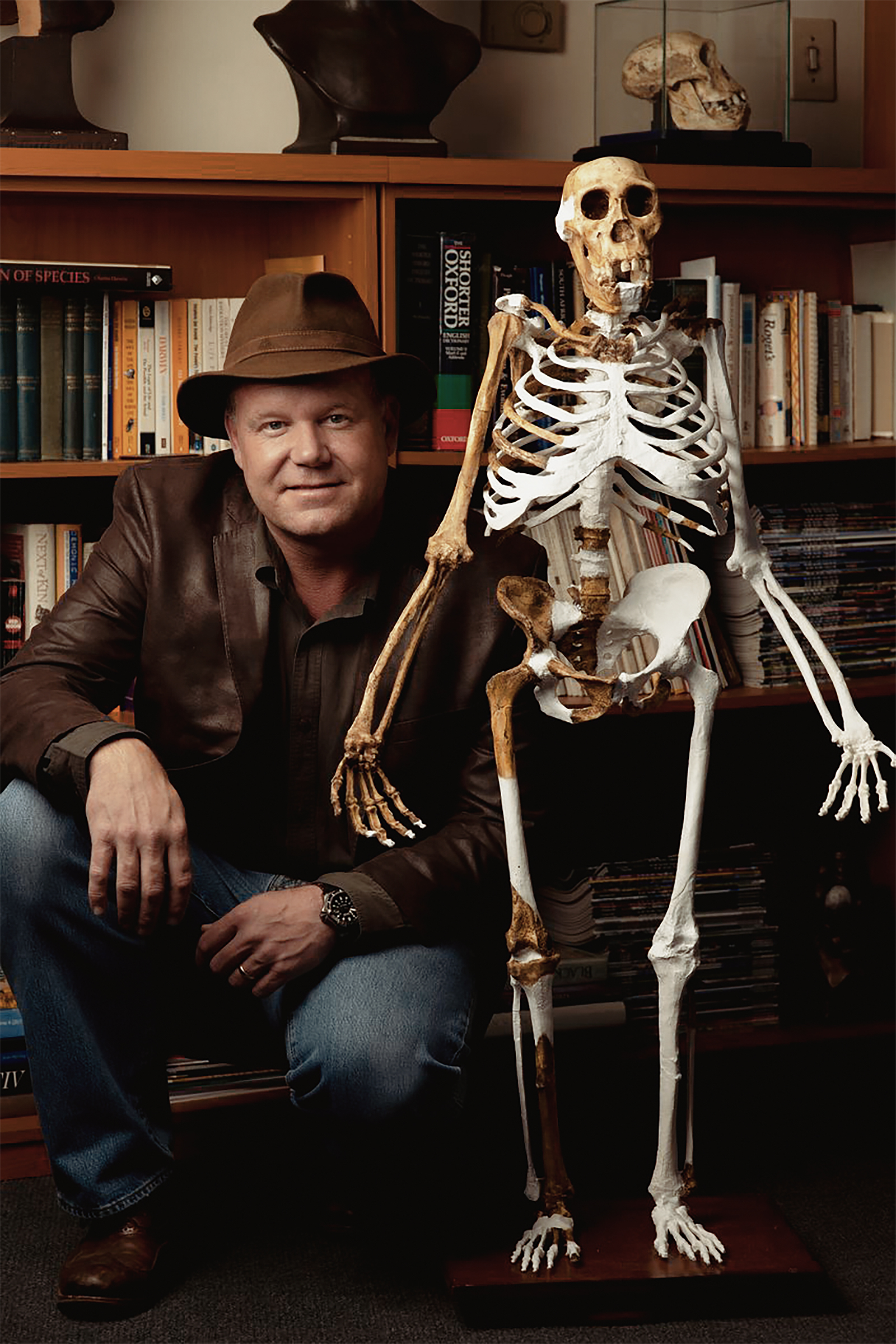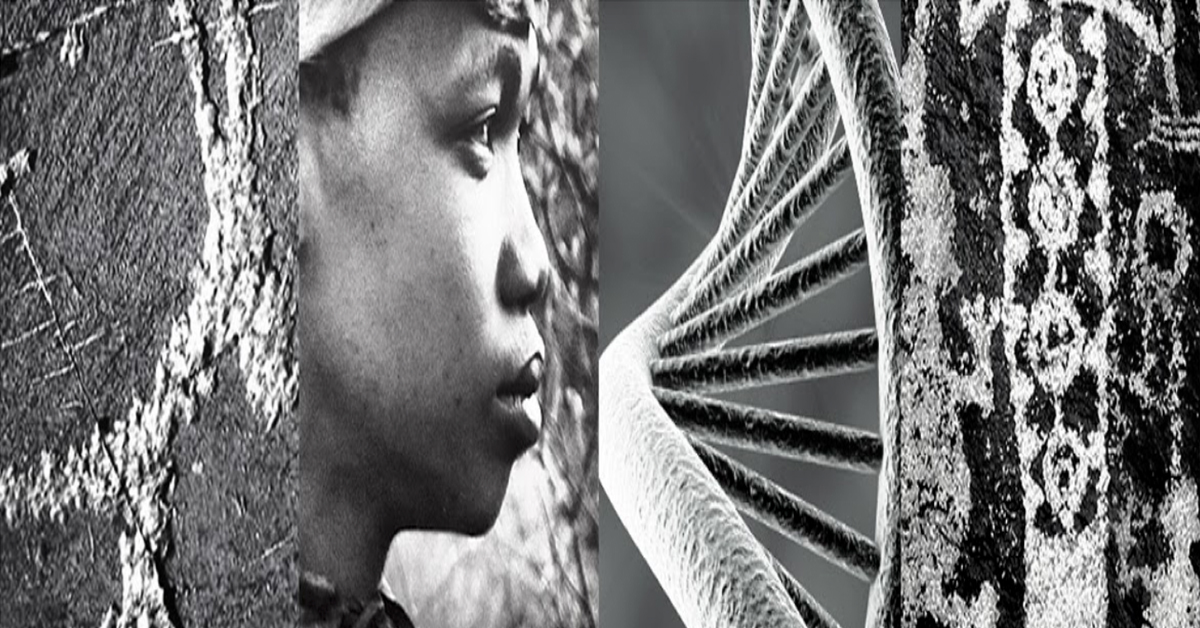
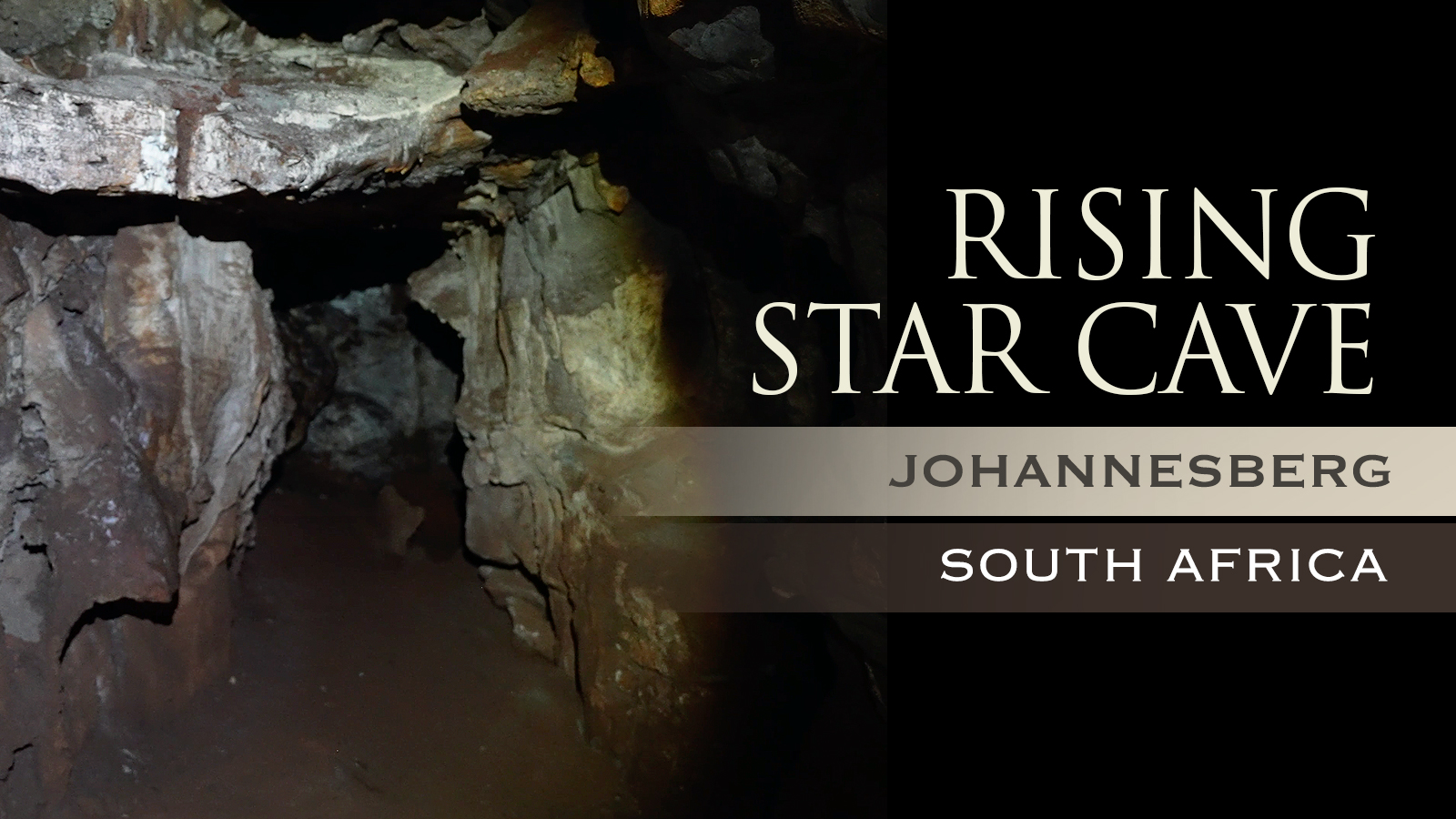
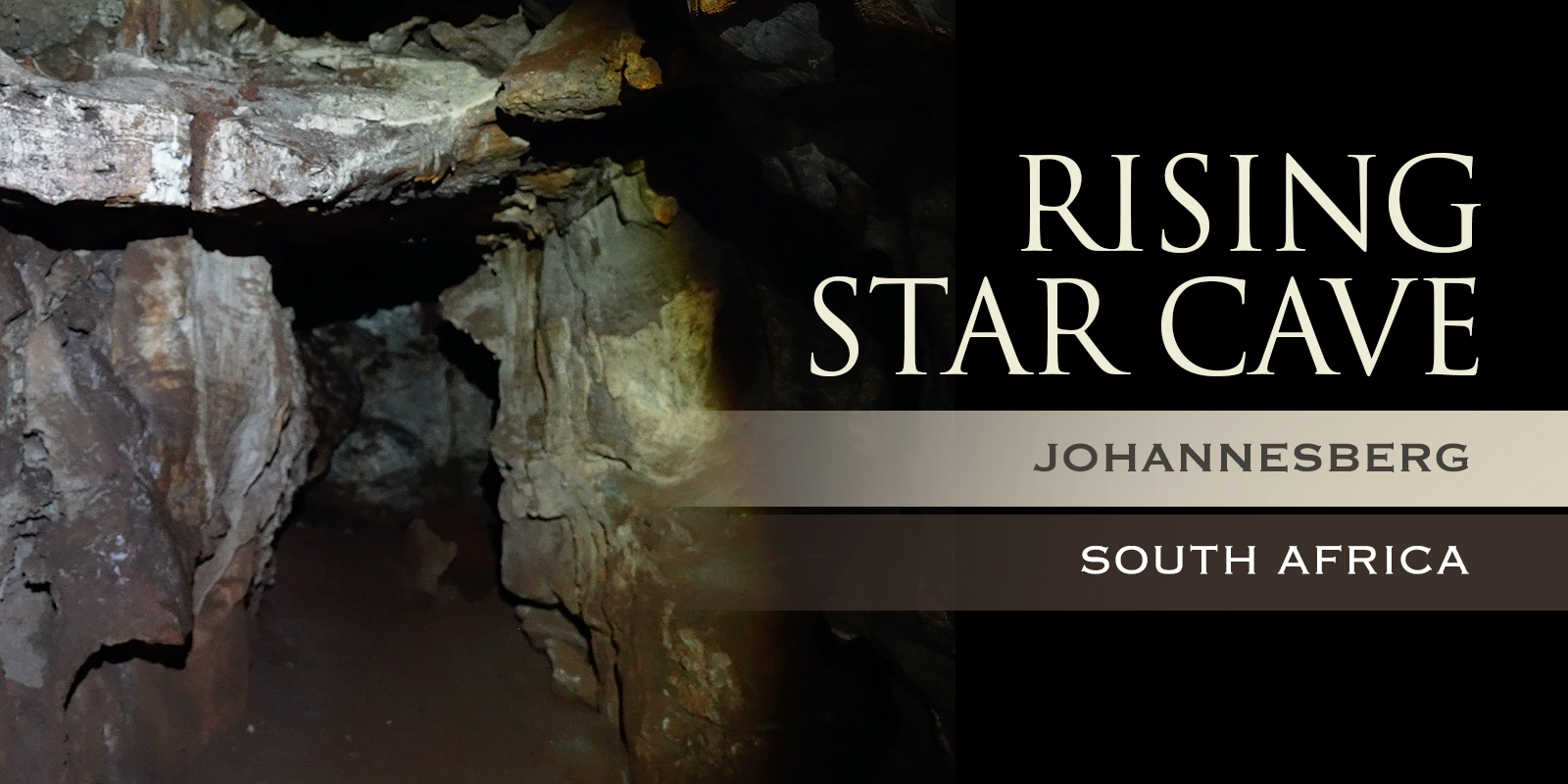
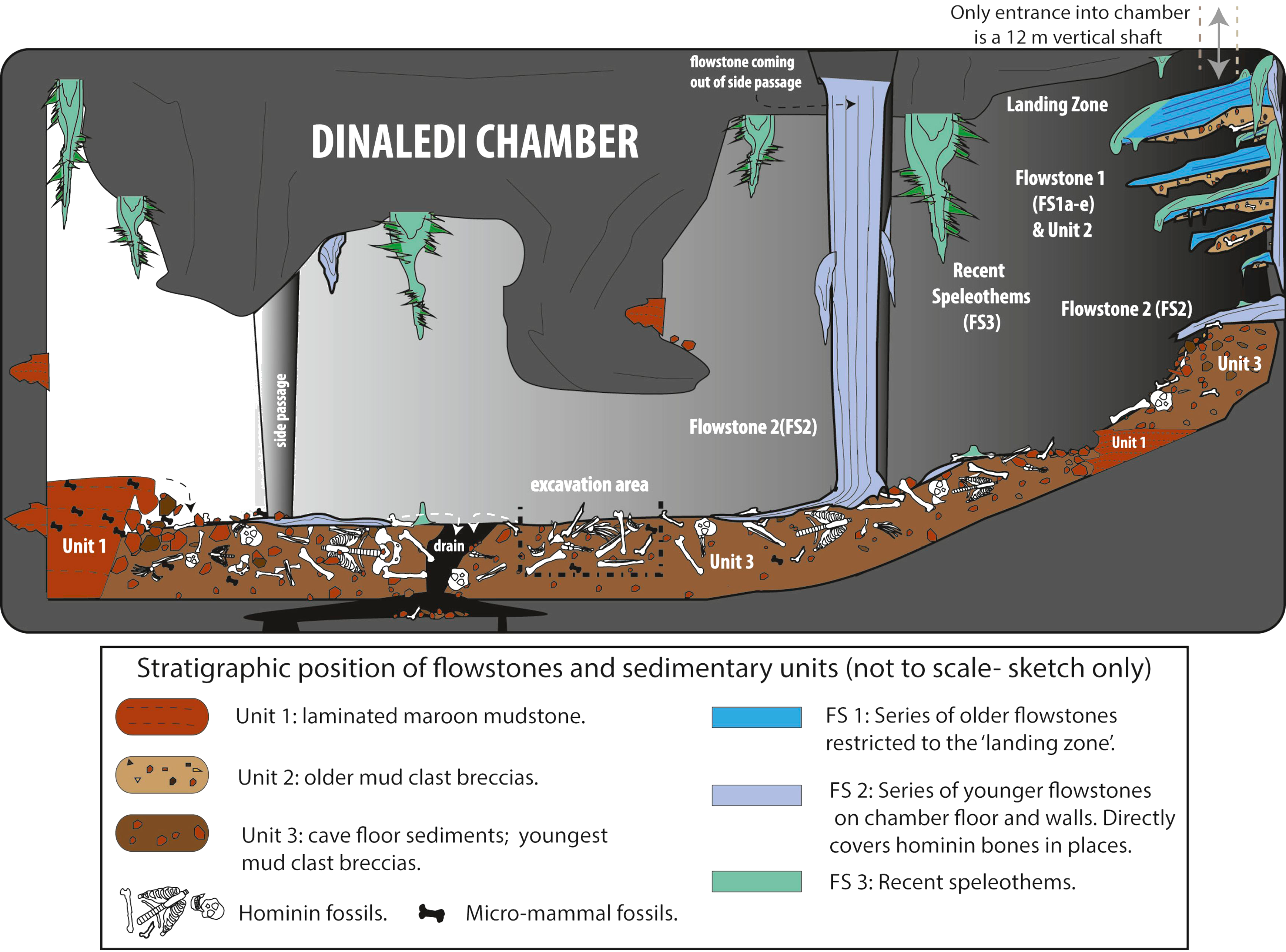
Fossils found in the cave in 2013 were proposed 2 years later to represent a previously unknown extinct species of hominin named Homo naledi. The species's name, naledi (Sesotho for "star"), and the 'Dinaledi Chamber' (incorporating the Sotho word for "stars") were so named by members of the Rising Star Expedition in reference to the species and chamber's location in Rising Star Cave.
On 13 September 2013, while exploring the Rising Star cave system, recreational cavers Rick Hunter and Steven Tucker of the Speleological Exploration Club (SEC) found a narrow, vertically oriented chimney (or chute) measuring 12 m in length with an average width of 20 cm. Hunter then discovered a room 30 m underground (Site U.W.101 or UW-101) now known as the Dinaledi Chamber, the surface of which was littered with fossil bones. On 1 October, photos of the site were shown to Pedro Boshoff and Lee Berger at the University of the Witwatersrand.
Berger organized an expedition to excavate the fossils, which started on 7 November 2013. The expedition was funded by the South African National Research Foundation and the National Geographic Society.
The excavation team enlisted six paleoanthropologists, all of whom were women, who could pass through an opening only 18 cm wide to access the Dinaledi Chamber. Those chosen were Hannah Morris, Marina Elliott, Becca Peixotto, Alia Gurtov, Lindsay Eaves, and Elen Feuerriegel. They have since been nicknamed the Underground Astronauts.
The Dinaledi Chamber was assigned the designation UW-101 (or U.W.101) and was excavated by these six members of the Rising Star Expedition during November 2013. More than 1,200 fossil elements were recovered and catalogued in November 2013, representing at least a dozen individuals. By April 2014, between two localities, 1,754 specimens were recovered.
The layered distribution of the bones [in clay-rich sediments] suggests that they had been deposited over a long period of time, perhaps centuries. Only one square meter of the cave chamber has been excavated; other remains might still be there.
On 20 February 2014, Rick Hunter, Lee Berger, John Hawks, Alia Gurtov, and Pedro Boshoff returned to Rising Star to evaluate a second potential site. The site, designated UW-102 (or U.W.102, aka Lesedi Chamber), was found by cavers Rick Hunter and Steve Tucker on the last day of the first Rising Star Expedition, and limited excavation began in April 2014.
As of September 2015, fossils of at least fifteen individuals, amounting to 1,550 specimens, had been excavated from the cave. About 300 bone fragments were collected from the surface of the Dinaledi Chamber, and about 1,250 fossil specimens were recovered from the chamber's main excavation pit, Unit 3. The fossils include skulls, jaws, ribs, teeth, bones of an almost complete foot, of a hand, and of an inner ear. The bones of both old and young individuals, as well as infants, were found.
